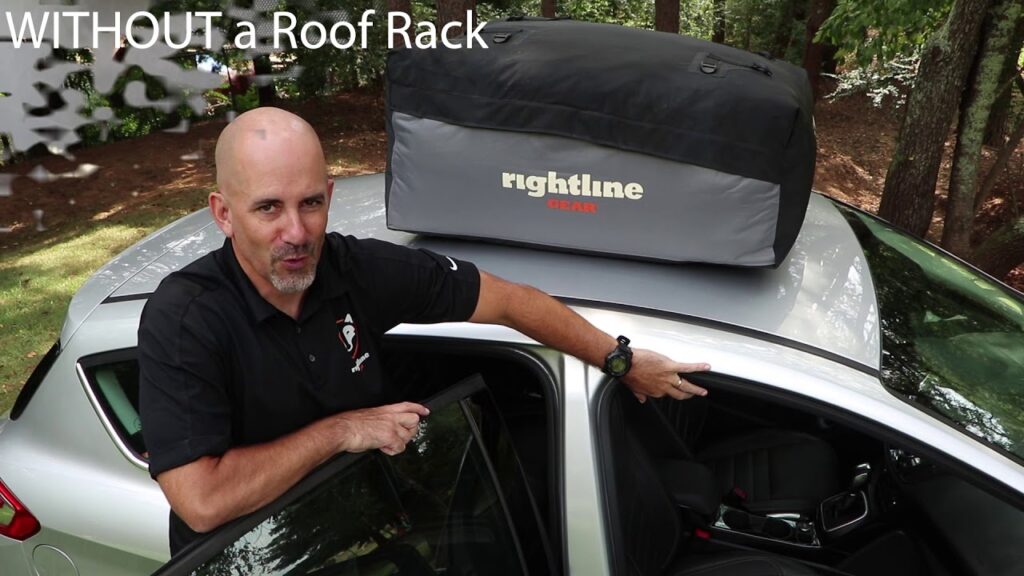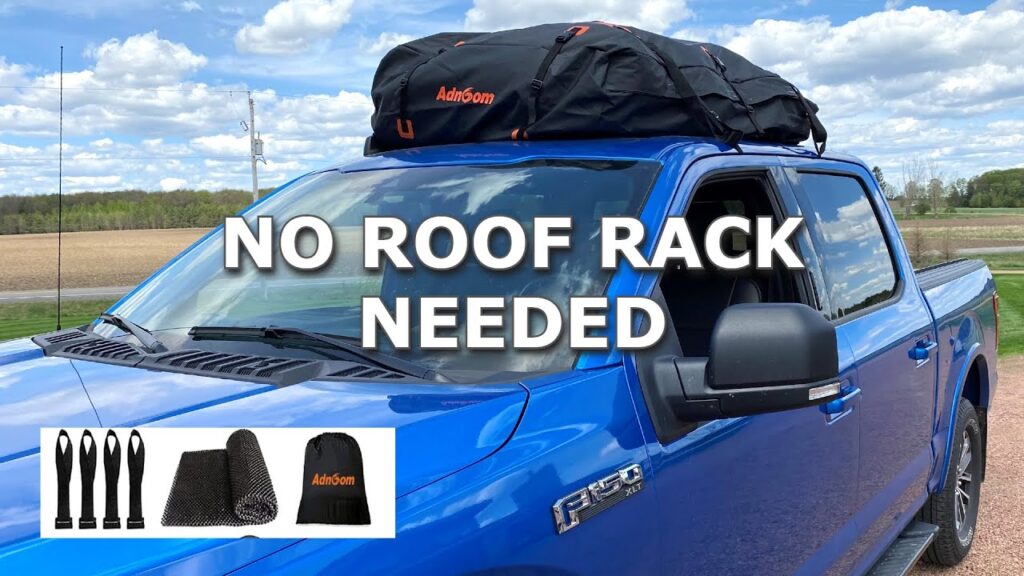Imagine the convenience of being able to carry all of your gear on your next road trip without the hassle of installing cross bars on your car. With the innovative “Using a Roof Bag Without Cross Bars” product, you can do just that! Say goodbye to the tedious process of attaching cross bars and hello to an easy and efficient way to transport your belongings. This revolutionary product is designed to securely hold your roof bag in place without the need for additional equipment. Whether you have a sedan, SUV, or any other vehicle without cross bars, this product is the game-changer you’ve been looking for. Say goodbye to limitations and hello to ultimate convenience with “Using a Roof Bag Without Cross Bars.”
Using a Roof Bag Without Cross Bars
If you’re someone who loves to travel or frequently finds themselves needing extra storage space, then a roof bag may be the perfect solution for you. Roof bags are a convenient and efficient way to carry your belongings on top of your vehicle, making it easier to transport bulky items or free up space inside the car. However, when it comes to using a roof bag, many people wonder whether it is possible to do so without the use of cross bars. In this article, we will explore the various aspects of using a roof bag without cross bars and provide you with some valuable insights to help you make an informed decision.
What are Roof Bags and Cross Bars?
Before diving into the topic, let’s start with the basics. Roof bags are large, weatherproof cargo carriers designed to be attached to the roof of your vehicle. They provide additional storage space, allowing you to carry items such as luggage, camping gear, skis, or even strollers.
On the other hand, cross bars are the horizontal bars that attach to the roof rails of your car. They create a stable and secure base for mounting various rooftop accessories, including roof bags. Cross bars come in different shapes and sizes to accommodate different vehicles and are typically made of materials such as steel or aluminum for durability.
Why are Cross Bars Necessary?
Cross bars play a crucial role in the proper functioning and safe usage of a roof bag. They provide the necessary support to ensure that the roof bag is securely fastened to your vehicle. Without cross bars, the roof bag would not have a stable platform to sit on, posing a significant risk to both your belongings and those sharing the road with you.
The cross bars distribute the weight evenly across the roof of the car, preventing any potential damage caused by the concentrated weight of the roof bag. Additionally, they provide essential reinforcement to prevent the roof bag from shifting or coming loose during transit, ensuring a smooth and safe journey.

This image is property of i.ytimg.com.
Can You Use a Roof Bag Without Cross Bars?
While it is technically possible to use a roof bag without cross bars, it is not recommended. Without cross bars, you lose the stability and security that they provide, increasing the risk of accidents or damage to your vehicle and belongings. Roof bags are designed to be used with adequate support, and by not using cross bars, you compromise the integrity of the whole setup.
Furthermore, using a roof bag without cross bars may also void any warranty or insurance coverage you have on your vehicle, as it goes against the manufacturer’s recommendations. It is important to prioritize your safety and that of others on the road by utilizing the appropriate equipment.
Considerations Before Using a Roof Bag Without Cross Bars
If you are considering using a roof bag without cross bars, there are a few important factors you should take into account. Firstly, check your vehicle’s manual or consult a professional to ensure that your car’s roof is suitable for supporting a roof bag without cross bars. Certain vehicles may have specific roof designs that necessitate the use of cross bars for safe installation.
Secondly, consider the weight and size of the items you plan to carry in the roof bag. Without cross bars, the weight capacity of the roof bag may be significantly reduced, and you must ensure that you do not exceed the weight limit to prevent damage to your car’s roof or the roof bag itself. Additionally, the size and shape of the items should not hinder your visibility or create aerodynamic issues while driving.
Lastly, evaluate the distance and conditions of your travel. While using a roof bag without cross bars for short distances on smooth roads may be less risky, it is still not recommended. It is always better to prioritize safety and invest in the proper equipment to ensure a secure and hassle-free journey.

This image is property of www.roofbag.com.
Choosing the Right Roof Bag
If you have decided to use a roof bag without cross bars, it is essential to choose the right one for your specific needs. Look for a roof bag that is compatible with your vehicle and has a suitable weight capacity. Consider the materials used in its construction to ensure durability and weather resistance. Look for features such as double-sealed zippers, reinforced stitching, and waterproof materials to protect your belongings.
There are various types of roof bags available, including soft-shell and hard-shell options. Soft-shell roof bags are usually more flexible and can accommodate larger items, while hard-shell roof bags offer added security and protection. Assess your requirements and choose the roof bag that best fits your needs and budget.
Installation Process for a Roof Bag Without Cross Bars
Installing a roof bag without cross bars may require some additional steps and precautions compared to using one with cross bars. Begin by carefully positioning the roof bag on the roof of your vehicle, ensuring that it is centered and aligned. Consider placing a protective layer, such as a blanket or a non-slip mat, between the roof bag and the vehicle to prevent any potential scratches.
Next, securely attach the straps or hooks provided with the roof bag to the anchor points on your car’s roof. Make sure to tighten the straps properly to minimize any movement or shifting of the roof bag during travel. Be cautious not to overtighten the straps, as it may cause damage to your vehicle or the roof bag.

This image is property of i.ytimg.com.
Securing the Roof Bag
Once the roof bag is installed, it is vital to double-check its security before hitting the road. Check all the straps and attachments to ensure that they are properly fastened and tightened. Give the roof bag a gentle push or tug to ensure that it does not move or shift excessively.
If your roof bag has additional security features, such as locks or reinforced buckles, make sure to utilize them for added peace of mind. These features can help prevent theft or unauthorized access to your belongings while your vehicle is unattended.
Driving with a Roof Bag and No Cross Bars
Driving with a roof bag and no cross bars requires extra caution and attention. The added height and weight on top of your vehicle may affect its handling and stability, especially in strong winds or during sudden maneuvers. Drive at moderate speeds, adhere to traffic regulations, and avoid abrupt lane changes or turns.
Be mindful of the increased roof height, as it may limit your access to low-clearance areas such as parking garages or drive-thru lanes. Additionally, the excess weight on your roof may impact your vehicle’s fuel efficiency, so monitor your fuel consumption and adjust accordingly.

This image is property of i.ytimg.com.
Weatherproofing and Protecting Your Belongings
Ensuring that your belongings are adequately protected from the elements is crucial when using a roof bag without cross bars. While most roof bags are designed to be weatherproof, it is still advisable to take precautions to further protect your belongings from rain, snow, or dust.
Consider using a waterproof cover or tarp to provide an extra layer of protection for your roof bag. Secure the cover tightly to prevent any water or debris from seeping into the bag during transit. Additionally, pack your items in waterproof bags or containers within the roof bag to safeguard them from potential water damage.
Alternative Options to Consider
If you find yourself needing additional storage space but are unable to use a roof bag without cross bars, there are alternative options worth considering. One option is using a hitch-mounted cargo carrier, which attaches to the rear hitch of your vehicle. This type of carrier offers ample storage capacity and is generally easier to load and unload compared to a roof bag.
Another alternative is using a trunk-mounted cargo carrier, which sits on the back of your vehicle. These carriers are often smaller in size compared to roof bags or hitch-mounted carriers, but they can still provide significant storage space for smaller items or gear.

This image is property of i.ytimg.com.
Conclusion
In conclusion, while it is technically possible to use a roof bag without cross bars, it is not recommended. The safety and security provided by cross bars are essential to ensure a trouble-free journey and protect your belongings. However, if you must use a roof bag without cross bars, it is crucial to choose the right roof bag, follow the installation process diligently, and drive with caution. Always prioritize your safety, the safety of others on the road, and the protection of your belongings when considering using a roof bag without cross bars.

